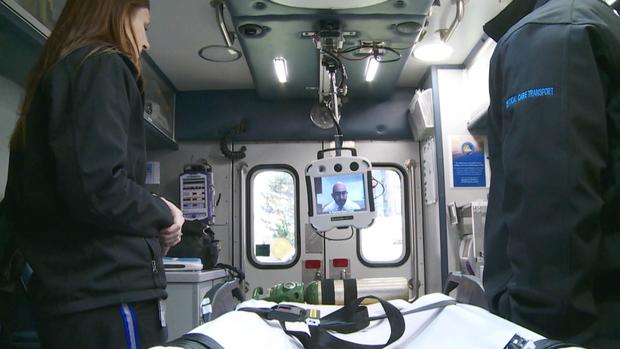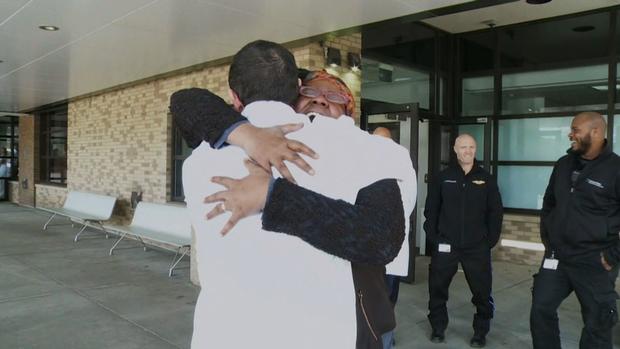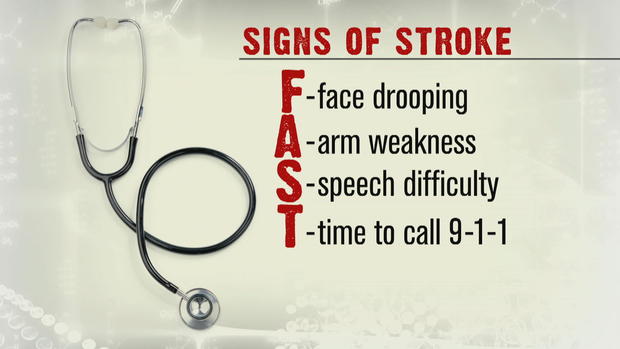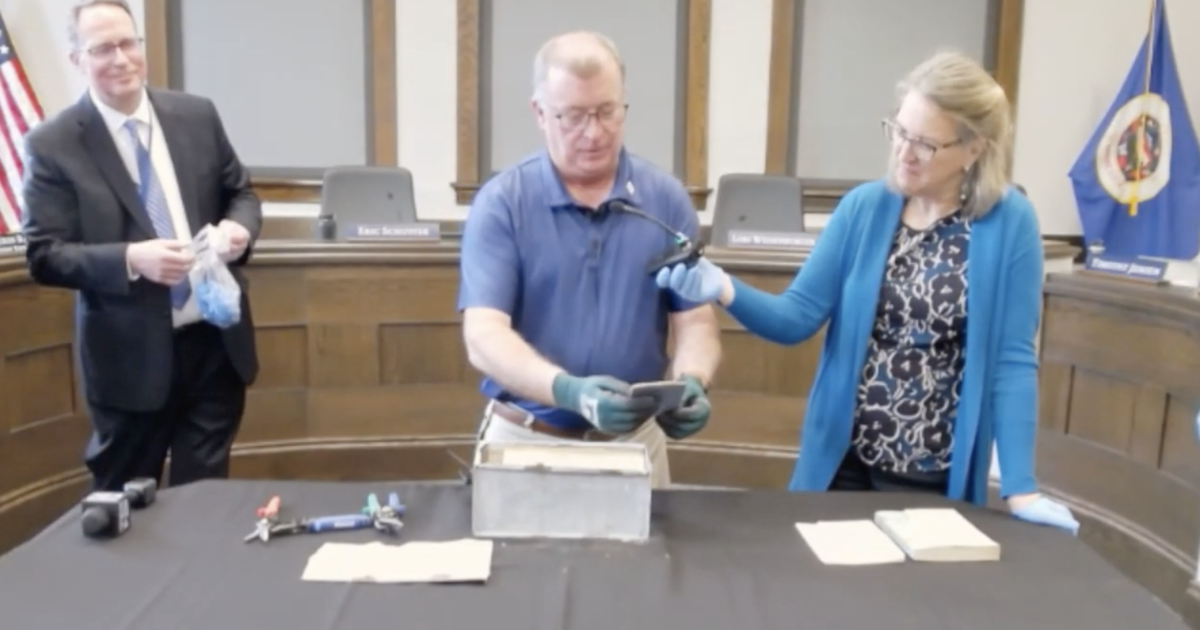Stroke ambulances allow for quicker treatment at crucial time
Every 40 seconds, someone in America experiences a stroke. Special ambulances rolling out across the country now allow doctors to start treatment before patients get to the hospital. With millions of brain cells lost every minute without treatment, saving time is crucial, reports CBS News’ Dr. Tara Narula.
When Monica Standberry suddenly began to feel felt sick last Friday, her daughter called 911.
“They were asking me to lift my legs and my arms and stuff. At first my leg wasn’t lifting anymore,” Standberry said.
A special mobile stroke unit responded. It’s equipped with a CT scanner, a video conferencing system to communicate with doctors at the hospital, and drugs that can stop the most common type of stroke in its tracks. Remotely, a neurologist diagnosed a stroke and ordered life-saving medication.
Dr. Muhammad Hussain managed Standberry’s care at the Cleveland Clinic.
“This actually allows us then to go right to a person’s home, be able to make a definitive diagnosis of what type of stroke it is, and then that allows us to deliver the right type of treatment immediately,” Hussain said.
The most common type of stroke occurs when a clot cuts off blood flow to the brain. Quick treatment with a drug called tPA, tissue plasminogen activator, can dissolve the blockage before brain cells die, preventing permanent damage or even death.
Hussain’s new study found that patients treated by a mobile stroke unit get tPA an average of 38 minutes faster than those transported in a regular ambulance — cutting the time from 94 to 56 minutes.
“It can make all the difference in the world between person being able to walk or not being able to walk. For a person able to go home versus having to live in a nursing home,” Hussain said.
After three days in the hospital, Standberry still has a limp. But the 41-year-old nurse’s aide feels lucky and grateful.
About 20 of these mobile stroke units are now deployed around the country. Each ambulance costs up to a million dollars — more than twice the cost of a regular ambulance — and about a million dollars a year to operate. But consider this: the CDC says strokes cost an estimated $33 billion each year for rehab, treatments and missed days of work.
To spot signs of a stroke, Narula said think of “FAST” — it stands for: Face drooping, Arm weakness, Speech difficulty and Time to call 911.






